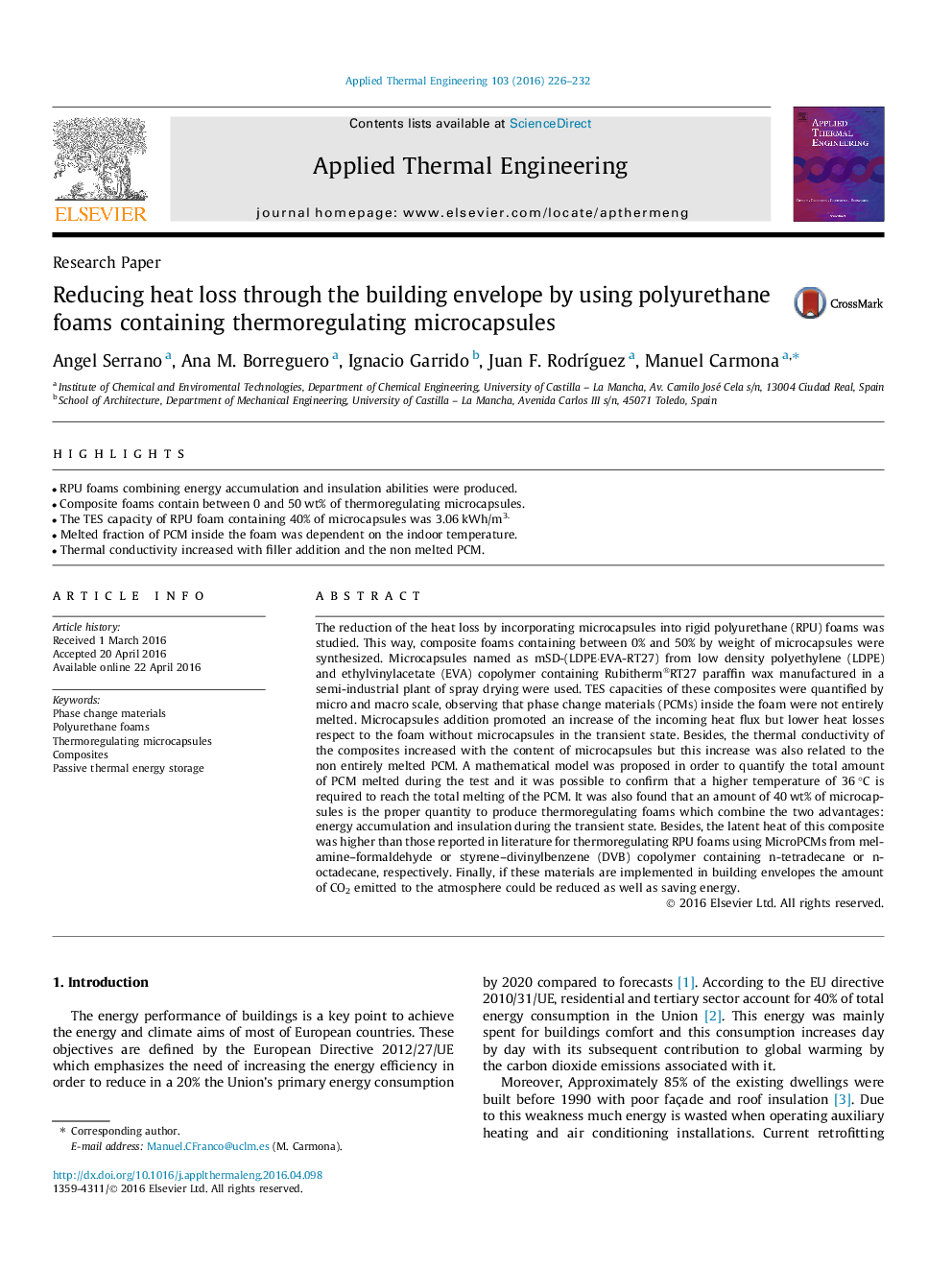| کد مقاله | کد نشریه | سال انتشار | مقاله انگلیسی | نسخه تمام متن |
|---|---|---|---|---|
| 7047633 | 1457125 | 2016 | 7 صفحه PDF | دانلود رایگان |
عنوان انگلیسی مقاله ISI
Reducing heat loss through the building envelope by using polyurethane foams containing thermoregulating microcapsules
ترجمه فارسی عنوان
کاهش تلفات گرما از طریق پاکت ساختمان با استفاده از فوم های پلی یورتان حاوی میکروکپسول های حرارتی تنظیم می شود
دانلود مقاله + سفارش ترجمه
دانلود مقاله ISI انگلیسی
رایگان برای ایرانیان
کلمات کلیدی
مواد تغییر فاز، فوم پلی یورتان، میکروکپسول های حرارتی کامپوزیت ذخیره انرژی حرارتی منفی،
موضوعات مرتبط
مهندسی و علوم پایه
مهندسی شیمی
جریان سیال و فرایندهای انتقال
چکیده انگلیسی
The reduction of the heat loss by incorporating microcapsules into rigid polyurethane (RPU) foams was studied. This way, composite foams containing between 0% and 50% by weight of microcapsules were synthesized. Microcapsules named as mSD-(LDPE·EVA-RT27) from low density polyethylene (LDPE) and ethylvinylacetate (EVA) copolymer containing Rubitherm®RT27 paraffin wax manufactured in a semi-industrial plant of spray drying were used. TES capacities of these composites were quantified by micro and macro scale, observing that phase change materials (PCMs) inside the foam were not entirely melted. Microcapsules addition promoted an increase of the incoming heat flux but lower heat losses respect to the foam without microcapsules in the transient state. Besides, the thermal conductivity of the composites increased with the content of microcapsules but this increase was also related to the non entirely melted PCM. A mathematical model was proposed in order to quantify the total amount of PCM melted during the test and it was possible to confirm that a higher temperature of 36 °C is required to reach the total melting of the PCM. It was also found that an amount of 40 wt% of microcapsules is the proper quantity to produce thermoregulating foams which combine the two advantages: energy accumulation and insulation during the transient state. Besides, the latent heat of this composite was higher than those reported in literature for thermoregulating RPU foams using MicroPCMs from melamine-formaldehyde or styrene-divinylbenzene (DVB) copolymer containing n-tetradecane or n-octadecane, respectively. Finally, if these materials are implemented in building envelopes the amount of CO2 emitted to the atmosphere could be reduced as well as saving energy.
ناشر
Database: Elsevier - ScienceDirect (ساینس دایرکت)
Journal: Applied Thermal Engineering - Volume 103, 25 June 2016, Pages 226-232
Journal: Applied Thermal Engineering - Volume 103, 25 June 2016, Pages 226-232
نویسندگان
Angel Serrano, Ana M. Borreguero, Ignacio Garrido, Juan F. RodrÃguez, Manuel Carmona,
